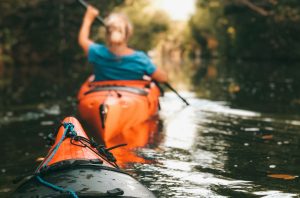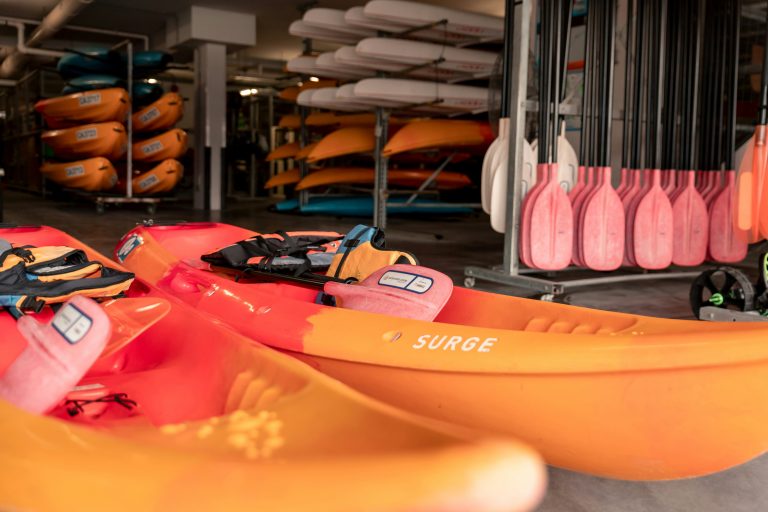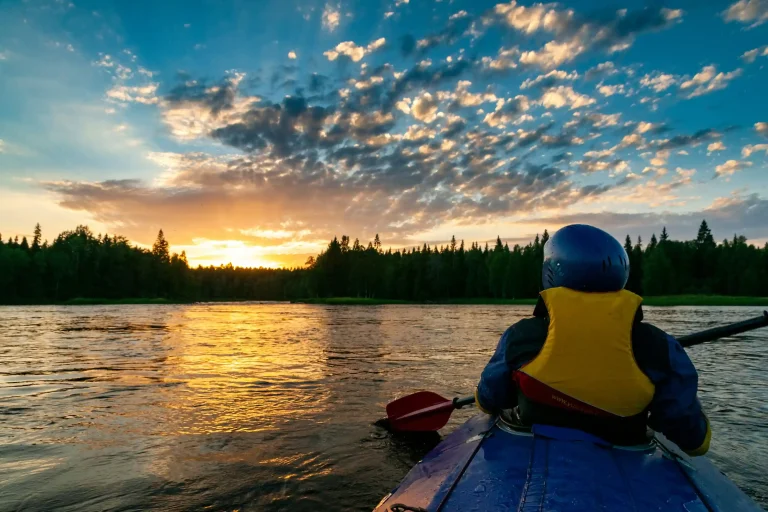Learn the most common beginner kayaking mistakes and how to avoid them. Essential safety tips and paddling techniques for new kayakers.
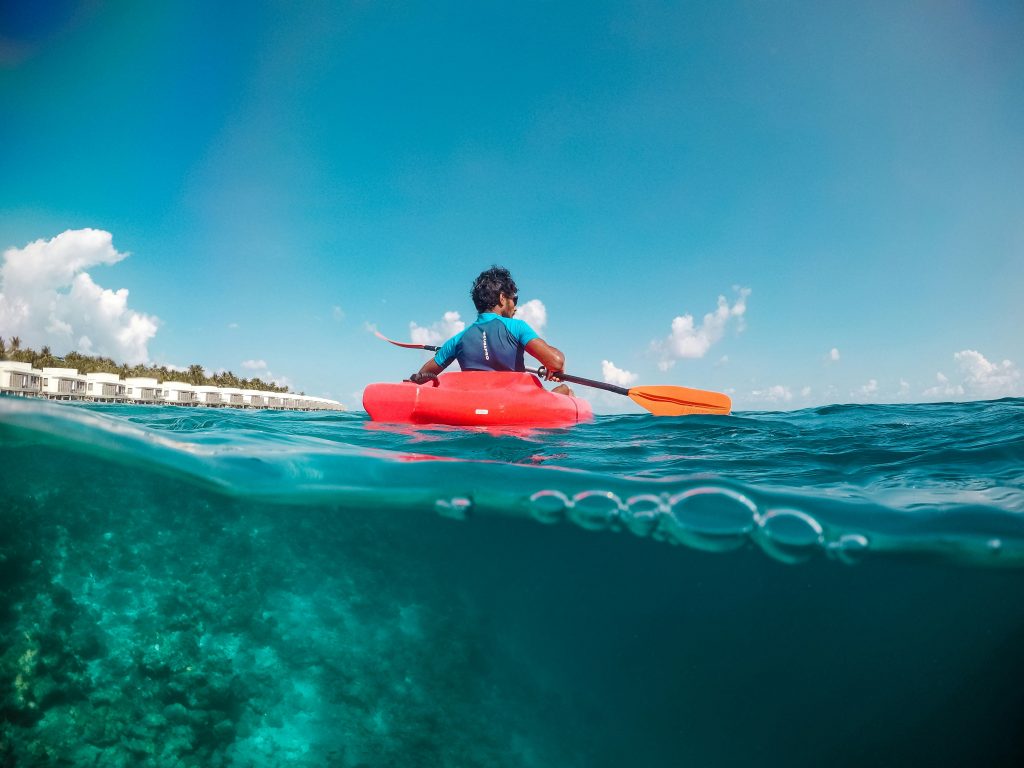
Table of Contents
Introduction
Kayaking opens up a world of adventure, offering peaceful paddles through serene lakes and thrilling rides down rushing rivers. However, many newcomers to the sport make critical beginner kayaking mistakes that can turn an exciting adventure into a dangerous or frustrating experience.
Whether you’re planning your first kayaking trip or you’ve already hit the water a few times, understanding these common pitfalls can mean the difference between a memorable day on the water and a potential emergency. From improper safety gear selection to poor paddle technique, new kayakers often overlook essential aspects that experienced paddlers take for granted.
The good news? Most beginner kayaking mistakes are entirely preventable with proper knowledge and preparation. This comprehensive guide will walk you through the most frequent errors new kayakers make and provide practical solutions to help you avoid them. You’ll learn about crucial safety considerations, proper equipment selection, essential paddling techniques, and smart planning strategies that will set you up for success on every kayaking adventure.
By the end of this article, you’ll have the knowledge and confidence to paddle safely and efficiently, avoiding the frustrations and dangers that catch many beginners off guard. Whether you’re interested in recreational lake paddling, river kayaking, or sea kayaking, these insights will serve as your foundation for a lifetime of safe and enjoyable paddling experiences.
Remember, every expert kayaker was once a beginner who learned from their mistakes or better yet, learned from others’ mistakes before making them. Let’s dive into the most common beginner kayaking mistakes and how you can sidestep them entirely.
Critical Safety Equipment Mistakes
1. Skipping the Personal Flotation Device (PFD)
One of the most dangerous beginner kayaking mistakes is neglecting to wear a proper personal flotation device. Many new kayakers assume that since they’re staying close to shore or they’re strong swimmers, a PFD isn’t necessary.
Why this is dangerous:
- Even experienced swimmers can become disoriented in cold water
- Kayaks can flip unexpectedly, especially in choppy conditions
- Hypothermia can set in quickly, reducing swimming ability
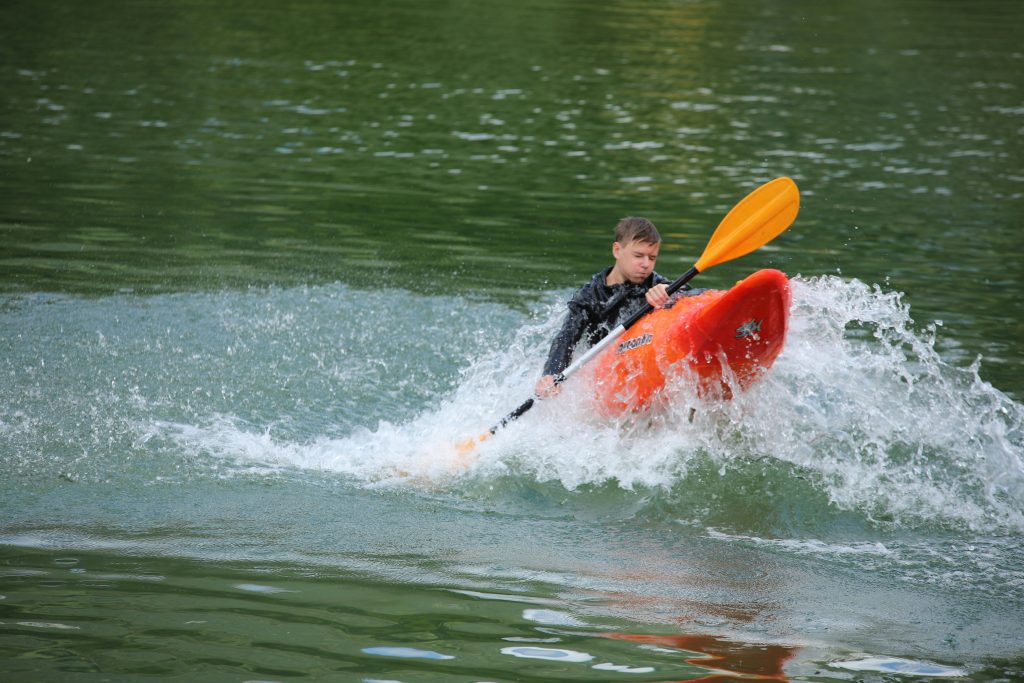
How to avoid this mistake:
- Always wear a Coast Guard-approved Type III PFD designed specifically for paddling
- Ensure your PFD fits snugly but allows full arm movement
- Choose a kayak-specific PFD with shorter torso length for better comfort while seated
- Test your PFD in shallow water before heading out
If you want to learn more about selecting the right safety equipment, check our comprehensive kayaking safety gear guide for detailed reviews and recommendations.
2. Inadequate Safety Communication
Many beginners fail to inform others about their paddling plans or carry proper communication devices.
Essential communication checklist:
- File a float plan with someone reliable, including departure time, route, and expected return
- Carry a waterproof whistle attached to your PFD
- Bring a waterproof phone case or VHF radio for longer trips
- Consider a personal locator beacon (PLB) for remote areas
3. Insufficient Weather Monitoring
New kayakers often check the weather once before leaving home and never reassess conditions throughout their trip.
Smart weather practices:
- Check weather conditions multiple times before and during your trip
- Download reliable weather apps like NOAA Weather Radar or local marine forecasts
- Learn to read cloud formations and wind patterns
- Have an exit strategy if conditions deteriorate
Paddle Technique and Efficiency Errors
1. Poor Paddle Grip and Posture
Incorrect paddle technique is among the most common beginner kayaking mistakes that leads to fatigue, inefficiency, and potential injury.
Common grip mistakes:
- Holding the paddle too tightly
- Incorrect hand spacing on the shaft
- Using only arm muscles instead of torso rotation
Proper paddling technique:
- Maintain a relaxed grip with hands positioned shoulder-width apart
- Use your core muscles to rotate your torso with each stroke
- Keep your upper hand at eye level during the catch phase
- Focus on pulling water past the kayak, not pushing the kayak through water
2. Inefficient Stroke Mechanics
Many beginners develop bad habits early that become difficult to correct later.
Key technique improvements:
- Enter the paddle blade near your feet and exit at your hip
- Keep the paddle shaft as vertical as possible during the power phase
- Alternate sides smoothly without pausing between strokes
- Practice the forward stroke in calm water before tackling challenging conditions
3. Neglecting Backup Paddle Skills
New kayakers often focus solely on forward paddling, leaving them unprepared when they need to maneuver quickly.
Essential strokes to master:
- Reverse stroke for backing up and emergency stops
- Sweep strokes for efficient turning
- Draw strokes for moving sideways
- Bracing for maintaining stability in rough conditions
Kayak Selection and Setup Blunders
1. Choosing the Wrong Kayak Type
One of the most frustrating beginner kayaking mistakes is selecting an inappropriate kayak for your intended use and skill level.
Common selection errors:
- Choosing a kayak that’s too long or narrow for stability
- Selecting a performance kayak when a recreational model would be better
- Ignoring weight capacity and gear storage needs
Smart kayak selection tips:
- Start with a wider, shorter recreational kayak (12-14 feet, 28+ inches wide)
- Consider sit-on-top kayaks for warmer climates and easier entry/exit
- Rent different kayak types before purchasing
- Match the kayak to your primary intended use (lakes, rivers, ocean)
For detailed kayak recommendations and comparisons, check our guide on choosing your first kayak which covers the best options for every budget and skill level.
2. Improper Seat and Footrest Adjustment
Poor kayak setup leads to discomfort, reduced control, and increased fatigue.
Optimal setup guidelines:
- Adjust the seat back to provide support while allowing torso rotation
- Position footrests so your knees are slightly bent and comfortably braced
- Ensure you can reach the paddle comfortably without over-extending
- Check that gear storage doesn’t interfere with your paddling motion
3. Overloading the Kayak
New kayakers often pack too much gear or exceed their kayak’s weight capacity.
Proper loading principles:
- Stay within 75% of your kayak’s maximum weight capacity for optimal performance
- Distribute weight evenly between bow and stern
- Keep heavy items low and centered
- Secure all gear to prevent loss if you capsize
Navigation and Route Planning Oversights
1. Underestimating Distance and Time
Many beginner kayaking mistakes stem from poor trip planning and unrealistic expectations about paddling speed and endurance.
Realistic planning guidelines:
- Plan for 2-3 mph average speed for recreational paddling
- Factor in rest breaks, lunch stops, and exploration time
- Choose routes with multiple exit points for flexibility
- Start with shorter trips (2-4 hours) and gradually increase duration
2. Ignoring Tides and Currents
Beginners often overlook how water movement affects their paddling experience and safety.
Essential water condition knowledge:
- Research tidal charts for coastal paddling
- Understand how currents affect your route timing
- Plan to paddle with favorable conditions when possible
- Learn to identify current patterns and water flow indicators
3. Failing to Scout Launch and Landing Sites
Poor access planning can turn a great day into a logistics nightmare.
Launch site considerations:
- Visit launch sites beforehand when possible
- Check for parking availability and fees
- Ensure you can safely carry your kayak to the water
- Identify alternative landing sites along your route
- Verify that overnight parking is allowed for multi-day trips
Weather and Environmental Misjudgments
1. Underestimating Wind Conditions
Wind is one of the most challenging conditions for new kayakers, yet it’s often underestimated.
Wind safety strategies:
- Avoid paddling in sustained winds over 15 mph as a beginner
- Learn to read water surface conditions that indicate wind strength
- Plan routes that offer wind protection or shorter crossings
- Practice paddling in light wind conditions before tackling stronger winds
2. Cold Water Dangers
The “120-degree rule” states that if air and water temperature combined equal less than 120°F, hypothermia risk increases significantly.
Cold water precautions:
- Wear appropriate insulating layers and avoid cotton clothing
- Consider a wetsuit or drysuit in water below 60°F
- Practice self-rescue techniques in controlled conditions
- Never paddle alone in cold water conditions
3. Wildlife Encounter Unpreparedness
Many beginners don’t consider how to properly interact with wildlife they may encounter.
Wildlife safety guidelines:
- Maintain respectful distances from all wildlife (100 yards from bears, 25 yards from other animals)
- Store food properly to avoid attracting animals
- Learn to identify potentially dangerous wildlife in your area
- Know how to react if you encounter aggressive animals
Physical and Mental Preparation Mistakes
1. Inadequate Fitness Preparation
Kayaking uses different muscle groups than many other activities, and beginners often underestimate the physical demands.
Fitness preparation tips:
- Build core strength with planks, rotational exercises, and balance training
- Improve shoulder flexibility and strength
- Practice proper lifting techniques for carrying your kayak
- Start with shorter paddles and gradually increase duration
2. Mental Preparation Oversights
Many beginner kayaking mistakes result from psychological factors like overconfidence or panic in challenging situations.
Mental readiness strategies:
- Practice visualization of various scenarios and responses
- Learn progressive relaxation techniques for stressful situations
- Build confidence gradually by mastering skills in safe environments
- Develop decision-making skills for changing conditions
3. Ignoring Hydration and Nutrition
Proper fueling is essential for maintaining energy and decision-making ability on the water.
Nutrition and hydration guidelines:
- Bring more water than you think you need (1 liter per 2-3 hours minimum)
- Pack high-energy snacks that won’t spoil in heat
- Eat regularly to maintain blood sugar and energy levels
- Avoid alcohol before or during paddling
Equipment and Gear Organization Failures
1. Inadequate Dry Storage
Water and valuable items don’t mix, yet many beginners fail to properly protect their gear.
Waterproofing essentials:
- Invest in quality dry bags of various sizes
- Use a waterproof phone case or dry box for electronics
- Pack backup clothing in waterproof storage
- Keep important items (keys, wallet) in easily accessible dry storage
2. Poor Gear Organization
Disorganized gear can lead to frustration and safety issues when you need something quickly.
Smart organization strategies:
- Use a gear checklist to ensure you don’t forget essentials
- Pack frequently needed items in easily accessible locations
- Color-code dry bags for quick identification
- Practice accessing your gear while seated in your kayak
Advanced Mistake Prevention Strategies
1. Lack of Skill Progression Planning
Many beginners plateau because they don’t have a structured approach to skill development.
Skill development framework:
- Take formal kayaking lessons from American Canoe Association certified instructors
- Join local paddling clubs or groups for mentorship
- Practice specific skills during each outing
- Set progressive goals for distance, conditions, and techniques
2. Insufficient Emergency Preparedness
Hoping for the best while not preparing for problems is a dangerous mindset.
Emergency preparedness checklist:
- Learn and practice self-rescue techniques regularly
- Carry a basic first aid kit appropriate for water activities
- Know how to signal for help using visual and audio signals
- Practice assisted rescue techniques with paddling partners
Conclusion
Avoiding these common beginner kayaking mistakes will set you up for a lifetime of safe and enjoyable paddling adventures. Remember that every experienced kayaker was once a beginner who learned these lessons—sometimes the hard way. By taking the time to understand proper safety protocols, master essential techniques, and plan your trips carefully, you’ll skip the frustrations and dangers that catch many newcomers off guard.
The key to successful kayaking lies in progressive skill building, respect for water conditions, and never stopping your education. Start with shorter trips in calm conditions, invest in proper safety equipment, and don’t hesitate to seek instruction from experienced paddlers or certified instructors.
Most importantly, remember that beginner kayaking mistakes are learning opportunities. Stay humble, paddle within your limits, and prioritize safety over adventure until your skills and experience grow. The water will always be there, and there’s no rush to tackle challenging conditions before you’re properly prepared.
Ready to start your kayaking journey the right way? Begin by taking a basic kayaking course, renting equipment to find what works for you, and connecting with local paddling communities. Your future self will thank you for building a strong foundation of skills and safety knowledge from the very beginning.
For more beginner-friendly kayaking content, explore our complete beginner’s guide to kayaking which covers everything from basic techniques to trip planning essentials.
Frequently Asked Questions
Q: What’s the most dangerous beginner kayaking mistake?
Not wearing a properly fitted personal flotation device (PFD) is the most dangerous mistake. Even strong swimmers can become disoriented or incapacitated in cold water, making a PFD essential for survival.
Q: How can I practice kayaking skills safely as a beginner?
Start in calm, shallow water close to shore. Take lessons from certified instructors, practice basic strokes and rescue techniques in controlled conditions, and gradually progress to more challenging environments as your skills improve.
Q: What should I do if I make a mistake while kayaking?
Stay calm, assess the situation, and use your training to respond appropriately. If you’re in immediate danger, signal for help. Most kayaking mistakes are recoverable with proper technique and preparation.
Q: How do I know if conditions are too challenging for my skill level?
If you’re questioning whether conditions are suitable, they probably aren’t. Start with calm water, light winds (under 10 mph), and good visibility. As you gain experience, you can gradually tackle more challenging conditions.
Q: What’s the best way to learn proper kayaking technique?
Take lessons from a certified instructor, join paddling groups, and practice regularly in safe conditions. Video analysis and feedback from experienced paddlers can also help you identify and correct technique issues.
